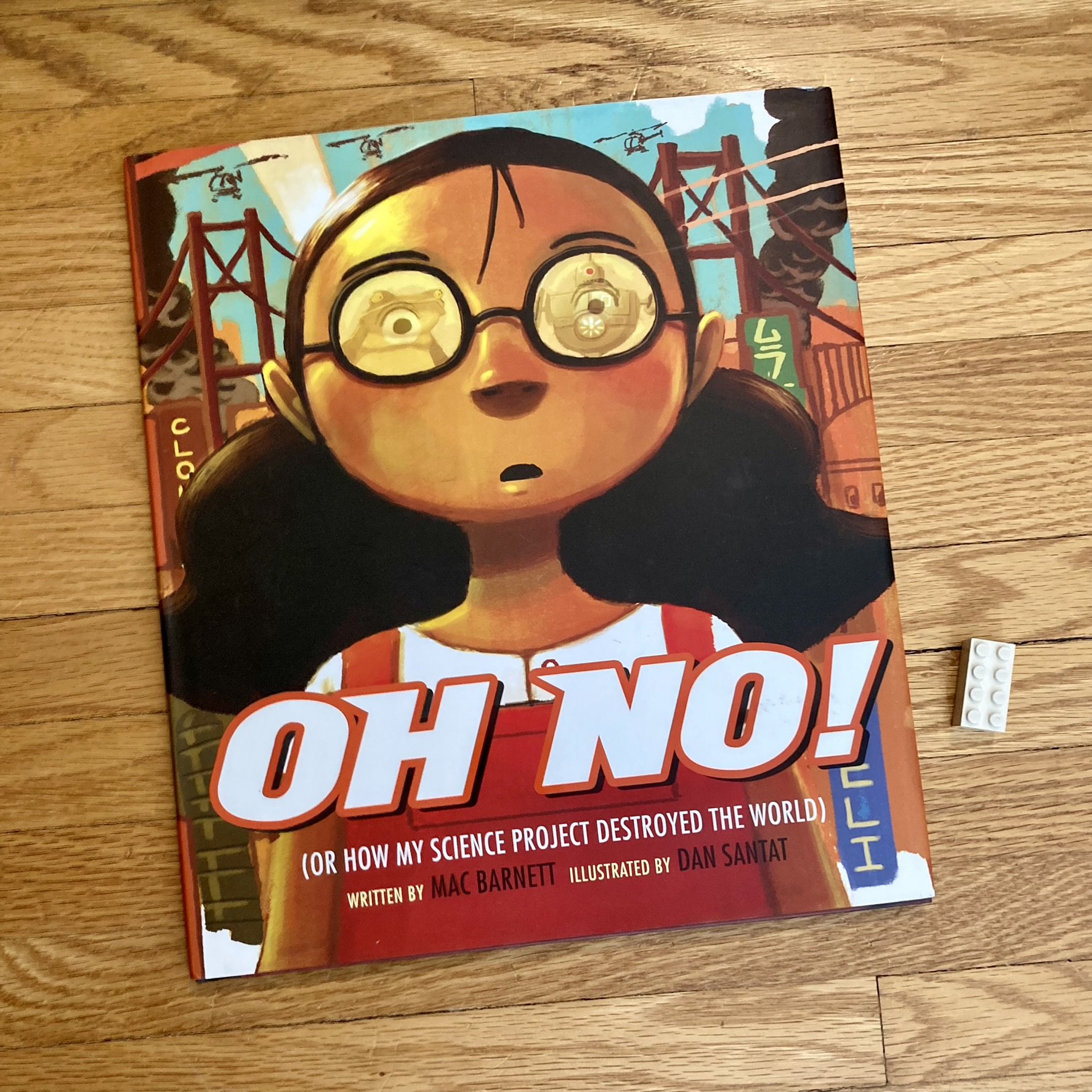The Book Cover Project
Created in partial fulfillment of the requirements for LIS 591 Publishing at the University of Alberta School of Library & Information Studies. Submitted March 27, 2023.
“Who said, ‘Don’t judge a book by its cover?’ We always do.”
– Ted Bishop, Riding With Rilke: Reflections on Motorcycles and Books, W. W. Norton & Company, 2005.
“What is this doing here? This is ugly! Who is this ISBN guy? Who will buy this book anyway? Over fifty pages of nonsense and I’m only in three of them…”
– Little Red Hen, The Stinky Cheese Man and Other Fairly Stupid Stories, written by Jon Scieszka and illustrated by Lane Smith, Viking, 1992.
First impressions…
One of my earliest library memories involves designing book jackets for my beloved school library at Duggan Elementary School. Not only was there pride in seeing your own work on display on the library shelves, but you ended up knowing the book even better than from just a casual read because you had to figure out how to “sell” that book to your friends and classmates with your artwork.
And that is still what the modern book cover is meant to do… catch your eye and get you to pull it off the shelf.
So perhaps it’s no surprise that for this, my final project in LIS 591 Publishing, in turn part of my work towards an MLIS at the University of Alberta School of Library and Information Studies, I decided to take a closer look at book covers and their role within the publishing and marketing of books.
Happy exploring!
Inset image: A photo of the Duggan Elementary School library and reading loft, courtesy the Duggan Elementary School website.
Banner image above: The author’s “book wall” in his living room, featuring some of his favourite book covers.
Image: Photo of the cover of The Oxford Illustrated History of the Book by James Raven, Oxford University Press, 2020.
So what are we even talking about here?
For the purposes of this project, we are talking in particular about the modern book cover in an English-language, and primarily North American, context. And for the most part we are using the terms “book cover” and “book jacket” interchangeably. What we’re really talking about – whether in the form of the hard- or soft-cover attached directly to the outside of a book, or a dust jacket wrapped around it, or even a digital image in an ebook catalogue – is that first visual impression of a modern book.
The broader study of the history of the book is a vast field, covering global cultures and by definition all of recorded history, print being literally the technology and infrastructure by which humanity recorded that history. But out of that five thousand year history, the modern book cover or book jacket as a promotional element has been around less than 150.
What follows is… let’s call it a sampler plate… of tidbits about the history and purpose of book covers, a closer look at example covers, and links to additional information, all presented in the hopes of encouraging readers of every kind to look a little more closely at the part of the book that, ironically, is usually the very first thing you see…
Something (relatively) new...
As authors Ned Drew and Paul Sternberger describe it in the introduction to their 2005 book By Its Cover: Modern American Book Cover Design, “the cover is a book’s first communication to the reader, a graphic representation not simply of its content, but of its point in history” (p.8).
Drew and Sternberger go on to summarize the shift in the role of the book jacket/cover thus:
“The book jacket evolved from a simple utilitarian object into a highly visual and conceptualized means of communication. While the first book jackets date to the 1820s, until late in the century they had only been used as protective packaging and tended to be nonpictorial, labeled wrappers with little focus on design. Book jackets began to gain importance in the 1890s with the recognition that they could be a way to attract the attention of potential buyers. Thus the book jacket became a focus of design in and of itself, separate from the front board of the book. By the end of the first decade of the twentieth century, the book jacket began to take root as a promotional tool, and its design received more attention” (p.20).
Image: The cover of By Its Cover.
Something important...
Meanwhile, Nicole Matthews and Nickianne Moody, editors of the essay collection Judging a Book by Its Cover: Fans, Publishers, Designers, and the Marketing of Fiction, published in 2007 by Ashgate Publishing, take things even a step further, arguing in their introduction for “the centrality of the covers of books in shaping the response of readers, markets and booksellers to the texts within them.”
Furthermore, they put forth that “books should be considered not just as literary texts but as visual media, to be considered alongside television and film as well as other forms of advertising.”
(Ironically, this book has, in my opinion, a terrible cover…)
Image: The 2007 cover of Judging a Book by Its Cover.
Something necessary...
In his 2012 TED Talk, Chip Kidd, legendary (amongst book designers at least!) book designer for Alfred A. Knopf, described Knopf as a “story factory” and then said that stories “all have one thing in common: They all need to look like something. They all need a face. Why? To give you a first impression of what you are about to get into. A book designer gives form to content, but also manages a very careful balance between the two.”
He goes on to say that the “book designer's responsibility is threefold: to the reader, to the publisher and, most of all, to the author. I want you to look at the author's book and say, ‘Wow! I need to read that.’”
Image: Screen capture from Designing books is no laughing matter. OK, it is., courtesy the TED website.
Something deliberate...
Viewed from the other side, Roy Peter Clark shares a story in Publishers Weekly of how he became the author of “the pretty green book,” a result of “a rational process” in which his book, a guide to writing, “spoke to the designer with a voice he could hear loud and clear” (2007).
Image: Cover of Writing Tools: 50 Essential Strategies for Every Writer, published by Little, Brown, 1998.
Image: Cover of Paratexts: Thresholds of Interpretation, by Gerard Genette and translated from the French by Jane E. Lewin, published by Cambridge University Press, 1997.
To put it a bit more in context, or rather, paratext…
Going in a bit more academic a direction, this “face” of a book is part of what can be described as the “paratext” of a book. What Chip Kidd calls “stories” French philosopher Gerard Genette describes in his groundbreaking book Paratexts: Thresholds of Interpretation as “texts,” core written works that are “rarely presented in an unadorned state, unreinforced and unaccompanied by a certain number of verbal or other productions, such as an author’s name, a title, a preface, illustrations [that] surround it and extend it, precisely in order to present it, in the usual sense of this verb but also in the strongest sense: to make present, the ensure the text’s presence in the world… the paratext is what enables a text to become a book and to be offered as such to its readers” (p.1).
He then further breaks down “paratexts” as a combination of “peritexts” – paratexts that are connected directly to the text – and “epitexts” – “any paratextual element not materially appended to the text within the same volume,” for example publisher media releases about the book or author interviews about it (p.5). The cover of a book lies solidly in the realm of peritext, and in particular the subheading of “publisher’s peritext,” and is one of the first elements Genette discusses in his book, listing various additional peritextual elements that are carried by the cover, the book’s title and the name of the author to name but two (pp.23-32).
This philosophical approach has fueled much additional research on the importance of paratext, including Strnad and Hewitt’s 2021 article “Reading a Book Through Its Cover: The Importance of Preserving Visual and Tactile Information in Children’s and Young Adult Literature in the Academic Library” – making a direct link between paratext and librarianship. And in making their case, they argue that “there has been so much work done on the subject that the inviolability of paratext is practically assured by this point” (p.337).
Like Drew and Sternberger, Strnad and Hewitt emphasize that the “threshold through which the reader enters the world of the book starts at the beginning—with the cover. The outside of a book is the first contact that the potential reader has with the paratext. This outside can be the boards of the book covered in paper or buckram cloth, or it can be the more colorful and attention grabbing paper dust jacket added to the book by the publisher” (p.335).
So however you approach it, this is literally where we always begin…
And as print and bookbinding technology has continued to improve, both the volume of books being produced as well as the ability to produce beautiful full colour imagery directly on the attached book boards – sometimes reproduced on a still-also-functionally-protective dust jacket, sometimes featuring complementary artwork on cover and jacket – means that whatever the form of the outside of the book, its role as promotional tool, as a way to attract the attention of potential readers and buyers, has never been more important.
With all this background in mind, we invite you to continue exploring the case studies and links below, and also to explore your own book collection, local libraries and bookstores, and favourite bookish websites, all with a more intentional and curious eye focused on the cover art and design.
I’ll also throw in a mention that we also have the Catalogue Projects and our visual explorer here at the Butterflies & Aliens Library as other places to explore how cover art might help, or hinder, your discovery of new books to read.
But above all, we hope you’ve enjoyed this initial dive into books covers, just one aspect of book publishing and the book as object.
Thanks for visiting and happy reading!
– Winston
Case Studies
Take an even deeper dive…
The Psychology of Book Covers
Bellingtier, J. A., Schenker, L.-E., & Weber, A. L. (2023). Judging a book by its older adult cover: age-related expectations and parental preference for children’s books. Current Psychology: A Journal for Diverse Perspectives on Diverse Psychological Issues, 1–13. https://doi.org/10.1007/s12144-023-04298-6
Ji, L.-J., Lee, A., Zhang, Z., Li, Y., Wang, X.-Q., Torok, D., & Rosenbaum, S. (2023). Judging a book by its cover: Cultural differences in inference of the inner state based on the outward appearance. Journal of Personality and Social Psychology. https://doi.org/10.1037/pspi0000413
Book Covers and Marketing
Hu, X., & Yao, M. Z. (2022). Judging a book by its cover: investigating consumer responses towards social cue in social media influencer marketing. Journal of Media Business Studies, 19(4), 225–239. https://doi.org/10.1080/16522354.2021.1960721
Kohlstedt, K. (2019, August 3). Classic Penguins: How Minimalist Book Covers Sold the Masses on Paperbacks. 99% Invisible. https://99percentinvisible.org/article/classic-penguins-how-minimalist-book-covers-sold-paperbacks-to-the-masses
Williams, D. (2020, February 6). Barnes & Noble cancels plan to put people of color on the covers of classic books after backlash. CNN Business. https://www.cnn.com/2020/02/05/media/barnes-and-noble-diverse-editions-trnd
Books Covers and A.I.
Lee, S. ( 1,2 ), Park, E. ( 1,3 ), & Kim, J. ( 3 ). (2023). Can book covers help predict bestsellers using machine learning approaches? Telematics and Informatics, 78. https://doi.org/10.1016/j.tele.2023.101948
Nooney, K. (2018, April 23). Judging a book by its cover..! Towards Data Science. https://towardsdatascience.com/judging-a-book-by-its-cover-1365d001ef50
Rasheed, A., Umar, A. I., Shirazi, S. H., Khan, Z., & Shahzad, M. (2022). Cover-based multiple book genre recognition using an improved multimodal network. International Journal on Document Analysis and Recognition (IJDAR), 1–24. https://doi.org/10.1007/s10032-022-00413-8
Book Covers and Romance Novels
Joe, R. (2015). Anatomy of a Cover. Publishers Weekly, 262(46), 22–27. https://www.publishersweekly.com/pw/by-topic/new-titles/adult-announcements/article/68690-anatomy-of-a-cover-romance-novels-2015-2016.html
Laing, S. (2023, February 11). Heaving bosoms, begone: Romance novel covers embrace playful shift; So-called “clinch covers” common in Harlequins have given way to more modern art as publishers look to expand their audience. (Books). Globe & Mail (Toronto, Canada), R8. https://www.theglobeandmail.com/arts/books/article-heaving-bosoms-begone-romance-novels-embrace-playful-less-steamy
Other Interesting Resources
Ellis, D. (2023, March 15). Can you guess the fantasy book by its international cover? Book Riot. https://bookriot.com/international-fantasy-book-covers-quiz
Goodman M J. 2016, September 29. Yes, you really can judge a book by its cover. The Conversation. https://theconversation.com/yes-you-really-can-judge-a-book-by-its-cover-65768
Works Cited
Clark, R. P. (2007, June 18). Judge my book by its cover: what goes into good book jacket design? (Soapbox). Publishers Weekly, 254(25), 62. https://www.publishersweekly.com/pw/by-topic/columns-and-blogs/soapbox/article/617-judge-my-book-by-its-cover.html
Drew, N., & Sternberger, P. S. (2005). By its cover: modern American book cover design. Princeton Architectural Press.
Genette, G. (1997). Paratexts: thresholds of interpretation (J. E. Lewin, Trans.). Cambridge University Press. (Original work published 1987).
Kidd, C. (2012). Designing books is no laughing matter. OK, it is. [video]. TED2012. https://www.ted.com/talks/chip_kidd_designing_books_is_no_laughing_matter_ok_it_is
Matthews, N., & Moody, N. (2007). Judging a book by its cover: fans, publishers, designers, and the marketing of fiction. Ashgate Publishing.
Strnad, B., & Hewitt, G. M. (2021). Reading a Book Through Its Cover: The Importance of Preserving Visual and Tactile Information in Children’s and Young Adult Literature in the Academic Library. Collection Management, 46(3/4), 332–346. https://doi.org/10.1080/01462679.2021.1907008








So, no, this isn’t a post about International Standard Book Numbers, and, no, this isn’t even really directly about the book we are featuring.
But since the back cover of this book provides one of two featured quotes in my Book Cover Project, and the front cover features on my “book wall” pictured at the start of the project, it seemed to make sense to give the book its due as a case study for that same project…